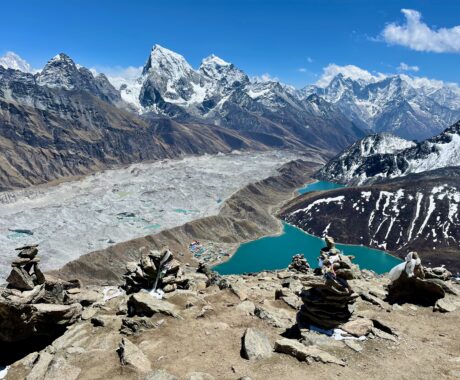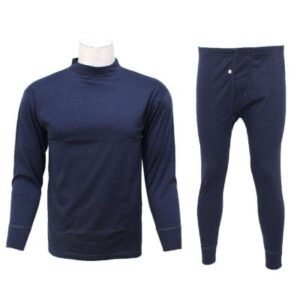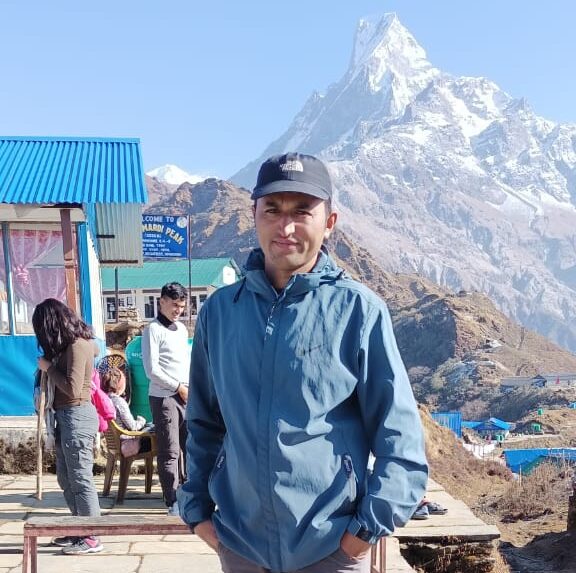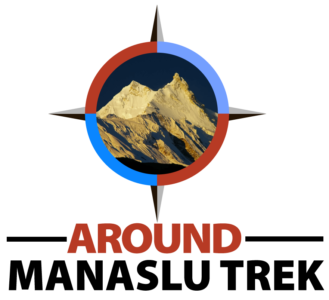Mt Makalu Expedition
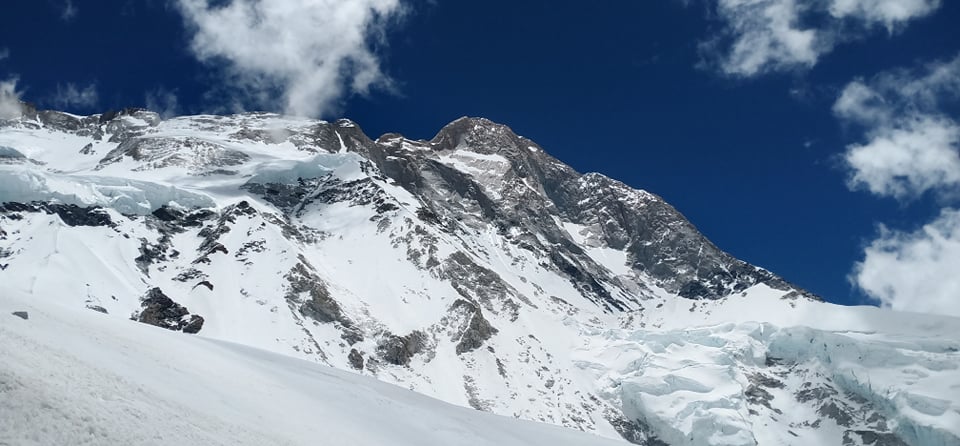
Trip Facts
- Destination Nepal
- Activity Expedition
- Duration 56 Days
- Trip Difficulty moderate_strenuous
- Max. Altitude 8463m
- Best Time March to June
- Start and End Kathmandu - Kathmandu
- Meals Breakfast / Lunch / Dinner
- Accommodation 5 star hotel in Kathmandu & Camping
- Group Size 2 - 20
Trip Highlights
- Beautiful view of Mt. Shishapangma to the west and Mt. Kanchenjunga to the east, with other snow-capped mountain chains visible in between
- Climbing Mount Makalu, the fifth-highest mountain in the world at 8,463 meters
- Chance to investigate the less frequented regions of Makalu-Barun National Park
- Investigating the rich cultural legacy of the Bhotia, Rai, Gurung, and Sherpas
- Fantastic experience that includes a full camping trip
- Take a scenic flight from Kathmandu to Tumlingtar and back
Introduction
Southeast of Mount Everest and in the Mahalangur range of the Himalayas, which is in eastern Nepal, is where you can find Mount Makalu. The fifth-highest mountain in the world, Mt. Makalu, at 8481 meters, is located near the boundary between Tibet, an autonomous region of China, and Nepal.
It is a solitary peak that accentuates the beauty of the mountain. It has strong ridges on four sides and resembles a perfect pyramid. It’s regarded as one of the world’s most difficult mountains to climb on an expedition.
The French Expedition’s Jean Couzy and Lionel Terray made the first ascent to this incredibly attractive summit on May 15, 1955. They ascended Mt. Makalu by the Northeast Ridge, which is still the traditional route, and the saddle between Makalu Peak and Kang Chun Tse, Makalu’s subsidiary peak.
After a quick but thrilling flight from Kathmandu to Tumlingtar, the excursion begins with a four-hour Jeep ride to the roadhead. There are numerous ups and downs and rivers to cross on the journey to Base Camp (BC).
You will have the chance to learn more about the distinctive customs and culture of the Bhotia, Sherpa, and Rai ethnic communities. The underprivileged group has a rich cultural history and customs.
These communities protect rare natural and cultural resources. They try to live their lives apart from the realm of materialism. Outside of the trekking community, not much is known about the secluded location. October and November in the fall, or April or May in the spring, are the finest times of year to climb Makalu.
You will learn patience, perseverance, and thankfulness from mountain climbing. It will also leave you with lifelong memories. There are waterfalls and tropical jungles on the walk to and from Makalu Base Camp. Before you climb Makalu, you will be inspired and filled with excitement by these breathtaking locations.
Best seasons for the Makalu Expedition
The Himalayan region experiences extremely severe and erratic weather. The weather and temperature fluctuations are major factors in choosing the ideal time for the Mt. Makalu trek.
Spring (March to May)
The Makalu Expedition is best experienced in the spring, which runs from March to May when the weather is clear and more consistent. The Rhododendron is in full bloom, the walking track is breathtakingly beautiful, and the weather is cool and temperate. Around this time, the temperature is fairly comfortable.
Summer/Monsoon (June to August)
Due to the mud, leeches, illnesses, and avalanche threats the rain brings, hikers are discouraged from going, making it the least popular season to travel. Warm temperatures increase the risk of unstable snow conditions for climbers.
Fall / Autumn (September to November)
The monsoon season gives way to the autumnal one. As a result, there are no chances of snowfall or rain throughout this season. Under ideal circumstances, you can ascend the peak. The splendor is enhanced by the unhindered vista of the mountains against a clear blue sky. With blossoming flowers and a beautiful sky, you may take in the breathtaking scenery while enjoying the challenge of mountain climbing.
Winter (December to February)
In the Makalu region, it might be especially challenging in the late December to early February cold months. Trekkers with the proper equipment, such as gloves, thermal jackets, thick socks, heavier clothes, first aid, and more, can go trekking during this season if they can tolerate the cold.
Makalu Expedition Difficulty
One of the world’s most technically difficult mountains is the Makalu Expedition. The technical parts put you to the ultimate test, as do the low oxygen levels, icy temperatures, and heavy clothing.
Additionally, it is dependent on the climber’s past climbing experiences, physical condition, age, weather, personal climbing equipment quality, Sherpa climbing guide experience, operator reputation and background, and climbing season.
The final ascent of the summit pyramid requires tough rock climbing, mostly between Camp II and Camp III, with a 400-meter knife ridge ascension path. Unlike other base camps, the Makalu Advance Base Camp is hotter due to its location on rocks.
From Makalu Base Camp, it takes around five hours to go to Advance Base Camp. Due to the snow and pebbles, the last three hours are challenging after the first two are light and simple.
Because of its infamous knife-edge ridges and steep pitches, you will need to become proficient with fixed ropes, crampons, and axes.
Before undertaking the real climb, climbers can practice utilizing them on training peaks. Another important aspect that raises the difficulty level is weariness. You need to be aware of the several elements that raise the risk of the trip, such as frostbite, sleep loss, and altitude sickness.
Outline Itinerary
Day 01: Arrival in Kathmandu – 1,300m
Day 02 – 03: preparation, documentation, and briefings – 1,300m
Day 04: Fly to Tumlingtar (920 meters) from Kathmandu and Drive to Num 1,500m – 03 hrs
Day 05: Trek to Sheduwa 1,500m
Day 06: Trek to Tashigaon 2,070m – 05 hrs
Day 07: Trek from Tashi Gaun to Khongma 3,760m – 08 hrs
Day 08: Rest day in Khongama dada 3,760m – 06 hrs
Day 09: Trek to Mumbuk / Dobato 3,550m – 07 hrs
Day 10: Trek to Yangle Kharka 3,500m – 07 hrs
Day 11: Rest day in Yangle Kharka – 3,500m
Day 12: Trek to Langmalr kharaka 4,400m – 05 hrs
Day 13: Makalu Basae Camp – 4,800m
Day 14: Makalu Basae Camp – 4,800m
Day 15-46: Climbing Period summit Makalu – 8,463m
Day 47: Cleaning up Base Camp – 4,800m
Day 48: Makalu Base Camp to Neh Kharka – 3,600m
Day 49: Yak Kharka to Mumbuk 3,500m – 06 hrs
Day 50: Trek to Tholo kharakha 3,100m – 07 hrs
Day 51: Trek back to Sheduwa 1,500m – 06 hrs
Day 52: Trek to Num 1,500m – 04 hrs Drive back to Tumlingtar 920m – 03 hrs
Day 53: Fly to Kathmandu from Tumlingtar 1,300m – 01 hrs
Day 54: Kathmandu – 1,300m
Day 55: Kathmandu – 1,300m
Day 56: Kathmandu – 1,300m
Alternative Treks & Expeditions to Mt. Makalu
If you’re drawn to the Mt. Makalu Expedition (8,485m)—one of the most challenging and isolated 8,000m peaks—but are seeking a new adventure, there are several equally rewarding options. Whether you’re after a less technical climb, a remote trek, or a similar high-altitude challenge, these alternatives will push your limits and offer breathtaking Himalayan experiences:
- Mt. Manaslu Expedition – 35 Days: A fantastic alternative for those seeking a technically challenging yet culturally immersive experience in the Himalayas.
- Mt Lhotse Expedition – 53 Days: The perfect choice for climbers looking for an exhilarating challenge on the fourth-highest peak in the world.
- Mt. Kanchenjunga Expedition – 55 Days: An epic climb to the third-highest mountain in the world, perfect for those looking for a demanding yet less crowded ascent.
- Annapurna Circuit Trek – 16 Days: A legendary trek that circles the Annapurna massif, offering varied landscapes, high-altitude passes, and cultural encounters.
Detailed Itinerary
-
Day 01: Arrival Kathmandu airport, pick up to hotel.
Altitude: 1300mMeals: Breakfast/lunch/DinnerAccommodation: 5 star hotel in Kathmandu -
Day 02: Kathmandu day Sightseeing.
Altitude: 1300mMeals: Breakfast/lunch/DinnerAccommodation: 5 star hotel in Kathmandu -
Day 03: Kathmandu Trek and Expedition briefing days.
Altitude: 1300mMeals: BreakfastAccommodation: 5 star hotel in Kathmandu -
Day 04 : Fly from Kathmandu to Tumbling tar- 50 Mints Drive to Num -3hrs.
Altitude: 1500mMeals: BreakfastAccommodation: Tea house -
Day 05: Trek to Seduwa - 6hrs.
Altitude: 1500mMeals: Breakfast/lunch/DinnerAccommodation: Tea house -
Day 06: Trek to Tashi-gaou -4hrs.
Altitude: 2100mMeals: Breakfast/lunch/DinnerAccommodation: Tea house -
Day 07: Trek to Khongma dada -8hrs.
Altitude: 3500mMeals: Breakfast/lunch/DinnerAccommodation: Tea house -
Day 08: Trek to Dobato -7hrs vai Kaumala 4000m/ Shipton pass 4125m/keke la 4200m.
Altitude: 3500mMeals: Breakfast/lunch/DinnerAccommodation: Tea house -
Day 09: Trek to Yangri Kharka-6hrs
Altitude: 3500mMeals: Breakfast/lunch/DinnerAccommodation: Tea house -
Day 10: Rest day in Yangri Karaka -Hike to Shiva dara.
Altitude: 3500mMeals: Breakfast/lunch/DinnerAccommodation: Tea house -
Day 11: Trek to Langmale Kharka -5hrs.
Altitude: 4400mMeals: Breakfast/lunch/DinnerAccommodation: Tea house -
Day 12: Trek to Makalu Base Camp -5hrs.
Altitude: 4800mMeals: Breakfast/lunch/DinnerAccommodation: Camping -
Day 13 to Day 45: Makalu Base Camp to Summit time.
Altitude: 4800m to 8468mMeals: Breakfast/lunch/DinnerAccommodation: Camping -
Day 46: Trek back to Yangri Kharka - 6hrs.
Altitude: 3500mMeals: Breakfast/lunch/DinnerAccommodation: 5 star hotel in Kathmandu -
Day 47:Trek back to Dobato - 6hrs.
Altitude: 3500mMeals: Breakfast/lunch/DinnerAccommodation: 5 star hotel in Kathmandu -
Day 48: Trek Back to Unshisa - 6hrs.
Altitude: 3000mMeals: Breakfast/lunch/DinnerAccommodation: Tea house -
Day 49: Trek Back to Seduwa.
Altitude: 1500mMeals: Breakfast/lunch/DinnerAccommodation: Tea house -
Day 50: Trek to Num 1500m and Drive back to Tumbling tar.
Altitude: 900mMeals: Breakfast/lunch/DinnerAccommodation: Tea house -
Day 51: Rest day in Kathmandu.
Altitude: 1300mMeals: Breakfast/lunch/DinnerAccommodation: 5 star hotel in Kathmandu -
Day 52: Rest day in Kathmandu.
Altitude: 1300mMeals: BreakfastAccommodation: 5 star hotel in Kathmandu -
Day 53: Departure from Kathmandu Airport.
Altitude: 1300mMeals: Breakfast/lunch/Dinner
What's included
- Arrival & Departure: Pick and drop facility-Airport/Hotel/Airport
- Accommodation: 4 nights at a standard hotel in Kathmandu on arrival and departure on Bed & Breakfast Basis - Twin Sharing
- Transportation: All required equipment Transportation for all Members and Staffs from Kathmandu-Tumlingtar–Basecamp (by Porters)- Tumlingtar (by porters)- KathmanduFood & Lodging: Major meals during Trekking for Members & Staffs
- Welcome Dinner: One Welcome Dinner in Kathmandu with the Office’s Staffs.
- Permit: All necessary paper works: Makalu Barun National Park Permit, TIMS permit, and conservation entry fees
- Trekking Map: Makalu Region
- Porters: Porters per member up to Base camp & back from Basecamp
- Dinner: 1 Farewell Dinner at a tourist-standard restaurant in Kathmandu with Nepalese Staff
- Oxygen: 2 oxygen bottles for each member and 1 oxygen bottle for each high-altitude Sherpa
- Mask & Regulator: 1 Set of top Out mask for each member and high-altitude Sherpa
- High Altitude Climbing Sherpa:1 Climbing Sherpa per member
What's not included
- International airfare to and from Kathmandu.
- Nepalese Visa Charges
- Lunch & Dinner in Kathmandu
- Extra night in Kathmandu: Extra nights’ accommodation in Kathmandu. In case of early arrival or late departure, early return from the expedition (due to any reason) than the scheduled itinerary.
- Insurance: Travel and High-Altitude Insurance / Accident / Medical / emergency evacuation
- Personal Expenses: Telephone, Internet, Laundry, any Alcoholic beverages, Personal equipment, and shopping
- Sherpa summit Bonus: Mandatory – Minimum USD 1,300
- Tips: Please calculate some tips for Basecamp staffs and porters
- The full set of Member's personal climbing equipment & clothing
- Rescue Evacuation: Emergency rescue evacuation cost, if needed, and all other expenses of personal nature
- Any other item not listed in the "Price Includes" section.
Trekking Gears
To ensure a safe and comfortable trek in the Himalayan region, it is highly recommended to bring the appropriate equipment and gear to cope with the cold temperatures. The following is a list of essential equipment and gear, which can be purchased either in the Thamel market or brought from your home country:
Baggage
- 70-100 liters Duffle bag
For trekking and expeditions, a duffel bag is essential to pack all kinds of trekking equipment. Duffel bags come in various sizes, ranging from 60 liters to 100 liters. There are different brands available, such as The North Face, Sonam, Sherpa, Rab, and Everest Hikes. You can purchase these bags both online and offline in your homeland or in Kathmandu, particularly in Thamel's trekking shops. The cost varies depending on the brand, ranging from $15 to $100.
- Water proof day pack 30-40 liters
For hiking and trekking, you can choose from various brands of day bags. We recommend a 30 to 45-liter waterproof, strong, and good-quality day bag. Prices range from $40 to $200, depending on the brand and quality. You can purchase it in your homeland or buy it at the Thamel market (a trekking shop). Typically, this bag is used for day hiking and carries toiletries, emergency medical supplies, snacks, a water bottle, a jacket, warm shirts/t-shirts, a hat, trekking poles, and gloves.
- Pancho / Raincoat
Rain, wind, and snow are common in trekking areas. Typically, to avoid rain, we use a poncho, which also helps keep our body, clothes, and day pack dry. The cost of a raincoat is $10 to $50, depending on the quality, and it can be found in Thamel (a trekking shop). Alternatively, if possible, you can bring one from your own source.
- Power Bank / Trekking Solar
In the Himalayas, a trekking area, electricity is limited due to a small hydro power station. Sometimes, the electricity may not work, and often solar panels are used in most places. If the day is not sunny, then solar panels may not work. In that case, we can use our own backup to charge electronic devices. The quality makes the price vary from $50 up to $150. You can buy it in a Kathmandu trekking shop, or you can bring it on your own.
- Water Filter
During mountain treks, it is essential to stay hydrated by drinking either hot or cold water. The mountain water is robust and rich in minerals. Having a water filter machine allows you to filter this water. This is not only environmentally friendly but also cost-effective, as plastic bottled water can be expensive. The price range for water filters is $50 to $100, depending on the brand. You can purchase one in your own country or buy it at a Thamel trekking shop.
- Sleeping bag (comfort rated _20)
Normally, we use a sleeping bag during camping trekking and teahouse trekking. In teahouses, we are provided with blankets, but during the busy season, the blankets may not be sufficient. That's why we highly recommend owning a sleeping bag. Sleeping bags come in different types, ranging from -5 degrees to -30 degrees, and they vary in price. If you choose to buy a local Nepali product, the cost may not be expensive, ranging from Rs 5000 to Rs 20000. However, if you prefer a brand like The North Face, Sonam, Sherpa, or RAV, the cost can range from $200 to $1000. You can purchase them online or offline.
In Nepal, you have the option to rent or buy a sleeping bag. If you opt for a trekking package, the organizer will arrange sleeping bags based on different trekking areas.
- Head torch
During our Himalaya trekking, we ventured into remote areas where electricity and lighting systems were scarce, even in teahouses and high passes such as Thorang Pass, Larkey Pass, and the three high passes. In these places, especially during nighttime trips to the toilet or while crossing high passes, a headlight is essential. Headlights come in different types, including a normal one, one with a battery, or another with an electric source, ranging in cost from $10 to $50. You can purchase them online or offline, either from trekking shops in Thamel or in your home country.
- Water bottles 1 lit 2
During Himalayan trekking, it is advisable to carry two types of bottles: a 1-liter small thermos for hot water, tea, or coffee, and another 1-liter bottle for regular drinking water. The prices for these bottles range from $7 to $50. You can purchase them at Thamel trekking shops or in your home country. In Nepal, these bottles are available both online and offline.
- Sun glass (100% up protection)
During Himalayan hiking and trekking, it is essential to have sunglasses that provide protection against dust, wind, snow, cold, and heat. Different weather conditions require different types of sunglasses. We highly recommend reputable brands for sunglasses, with prices ranging from $10 to 200%. These sunglasses are readily available both online and offline. You can conveniently purchase them from trekking shops in Kathmandu Thamel or from retailers in your own country.
Clothing Essential
- Water proof jacket
During Himalaya hiking and trekking, where you may encounter rain, wind, cold, heat, dust, and snow, it is essential to invest in a high-quality waterproof jacket for protection. Various brands offer reliable options, such as The North Face, Sherpa, Sonam, Black Diamond, and RAB, with prices ranging from $100 to $500. These jackets are available for purchase both online and offline. You can find them at The Kathmandu Thamel trekking shop or in stores in your own country.
- Warm down jacket
During the trekking, we need a down jacket for cold places. We highly recommend a local or international brand depending on your budget. The cost will start from $5 and can go up to $1000. The recommended brands are "The North Face, Sonam, Black Diamond, Sherpa," which you can buy from your home country or in Kathmandu Thamel trekking shops. They are available both online and offline.
- Warm jumper
When reaching the teahouses during Himalayan treks, it is advisable to change into warmer clothes. We highly recommend bringing a jumper, and there are both local and international brands available, depending on your budget. Prices start from $30 to $120. If you already have one, that's fine; otherwise, you can purchase it in Nepal from the Thamel market, both online and offline.
- Trekking trousers
During Himalaya trekking, it is essential to have waterproof trousers to protect against rain, wind, dust, cold, and snow. We highly recommend choosing a brand based on your budget, with prices ranging from $20 to $150. Some notable trekking trouser brands include "The North Face," "Sonam," "Black Diamond," and "RAB." These trousers can be purchased both online and offline. If you already have them, you can bring them along; otherwise, you can purchase them at the Nepal Thamel Market.
- Base layer shirts
Normally, during Himalayan trekking, we use base layer shirts to protect ourselves from wind, dust, sun, and rain while hiking. There are both local and international brands available, with costs ranging from $20 to $120. You can purchase them either online or offline. If you already have one, you can bring it with you; otherwise, you can buy it at a trekking shop in Nepal.
During Himalayan trekking, the trekking areas can be extremely cold. We highly recommend purchasing a set of thermal clothing. There are both local and international brands available, such as The North Face, Sonam, Sherpa, Black Diamond, Kathmandu, and Everest. The cost can range from $50 to $250, and you can find these sets both online and offline. If you already have a set, you can use that; otherwise, we recommend buying one in Nepal, specifically at the Thamel market.
- Sunhat/warm hat/beanie
During Himalayan trekking and hiking, it is advisable to wear a sun hat to protect yourself from the sun. Additionally, when feeling cold, you can use your own woolen hat. We highly recommend purchasing either local or international brands, with prices starting from $5 and going up to $25. You can find these hats in the Thamel market in Nepal.
- Scarfs
During Himalayas trekking, it is essential to protect your neck, ears, mouth, and nose. We highly recommend purchasing different types of scarves, which are available in Nepal Thamel trekking shops. Prices start from $3 and go up to $25.
- Hiking boots
During Himalayan hiking and trekking, the most crucial equipment is footwear, particularly trekking boots. These boots are essential for safeguarding your ankles, ensuring safe walking, and being physically and mentally prepared for the trek. We highly recommend purchasing internationally recognized waterproof shoe brands such as Salomon, Hoka, Lowa, and Marmot. The cost typically starts from $150 and can go up to $400. You can find these brands in both Europe and Asia, including the Kathmandu Thamel market.
- Trekking socks / liner sock/heavy mountaineering socks
During Himalaya hiking and trekking, it is essential to have different types of socks depending on your budget. We highly recommend investing in trekking socks, with prices ranging from $3 to $30. There are both local and international brands available, and you can purchase them in Kathmandu's Thamel market.
- Sun protection / Lip Gaurd
During Himalayan hiking and trekking, we encounter various weather conditions such as sun, snow, cold, and dust, which can dry out the skin and lips. In such situations, it is essential to use protection, especially if you have sun allergy. We highly recommend purchasing lip balm and sunscreen, with costs ranging from $1 to $30. These products can be bought at trekking shops in Thamel, Kathmandu.
- Wash bag toiletries
During Himalayan hiking and trekking, we consistently rely on nature for various needs. For long toilet breaks, it is essential to carry toilet paper. Whether at tea houses or during the trek, having a good quality toilet paper is crucial. We highly recommend purchasing it from Thamel trekking shops, where the cost ranges from $1 to $2.
- Antibacterial hand wash
During Himalayan hiking and trekking, where access to washing towels or hot water is limited, it is recommended to purchase wet paper. The cost starts from $2 and can go up to $8 at medical shops in Thamel.
- Travel towel
During Himalayan hiking and trekking, the hotels are not luxurious; they are based on local standards. It is advisable to carry both a large and a small towel for drying the face and body. These items can be purchased at trekking shops in Thamel, with prices ranging from $2 to $20.
- Small pad lock to lock your bag
While hiking and trekking in the Himalayas, our duffel bag is carried by the porter. It is advisable to secure all your equipment inside the bag with a lock. We highly recommend purchasing a small lock, with costs ranging from $1 to $5, which can be found in Kathmandu's trekking shops.
- Medical Kits
During Himalayas hiking and trekking, most of the time, we are in remote areas and need to carry a basic medical kit with us. The emergency primary medicines we should have depend on our needs. You can buy them at a medical shop in the Thamel market. The basic first aid kit should include antiseptic cream, throat lozenges, diarrhea treatment (like loperamide), altitude sickness medication (such as acetazolamide), painkillers, insect repellent, plasters, blister treatment, insect repellent, and rehydration salts like Dioralite. Additionally, it's advisable to carry glucose tablets and multi-vitamin tablets.
- Trekking pole / Sleeping bag liner / Travel clothes / Camera / Pen knife
Normally, when getting ready for Himalayan hiking and trekking, both physically and mentally, it's essential to have trekking poles. They provide support for another leg, and there are various types available. We highly recommend investing in a good quality pole.
Inside your sleeping bag, a liner is necessary to keep warm. Before and after trekking, comfortable city clothes are essential. You can use your old ones or opt to buy new ones depending on your preference.
During the trek, capturing different angles and views with a good camera is crucial. You can use your existing one or invest in a new camera based on your budget.
In case of emergencies or for general use during the trek, it's advisable to have a Swiss small knife. You can purchase all these items at Thamel trekking shops.
What Not To Pack?
- Jewelry and valuables things, Heavy zoom lenses for your camera, Too many cotton clothes/ more than one pair of jeans, Bulky towels
During Himalayan tours, including activities such as hiking, trekking, peak climbing, and expeditions, we strongly advise against bringing items such as jewelry, gold, excessive cash, large cameras, too many cotton clothes, thick towels, etc.
Climbing Gear
- Climbing boots
- Climbing jacket and paint set
- Ice Axe
- Climbing Crampons set
- Climbing Rob
- Expedition day bag
- Harness set 6
- Climbing Glove
- Climbing torch light
- Climbing Sleeping bag
- Climbing tend
- Climbing water proof matrix
- Climbing cooking pot and small gas with stop
- Oxygen cylinder
- mitts or jumars
- Climbing trekking pole
- pee botal
- Climbing tea cup ,spoon and fork
- Climbing helmet
FAQs of Mt Makalu Expedition
-
How challenging is the Makalu Expedition?
One of the world's most challenging mountains to climb, Makalu is a tougher and more technically challenging eight-thousander. Expeditions to Makalu are challenging because of the mountain's well-known steep slopes and jagged ridges. -
What time of year is best for the Mount Makalu Expedition?
October and November in the fall, or April or May in the spring, are the finest times of year to climb Makalu. You will learn patience, perseverance, and thankfulness from mountain climbing. -
Which accommodations are offered for the trek?
It could be hard to locate accommodation on your own because this region doesn't have a lot of teahouses or lodges. Most of the days are spent camping. -
How do you prevent acute mountain sickness?
It's important to give the body ample time to adjust. You can go to a lower elevation right away and get medical attention if you have any of the earliest symptoms, which include headaches, shortness of breath, exhaustion, nausea, difficulty sleeping, swelling in the hands, feet, and face, as well as lack of appetite. -
Is travel insurance necessary to go trekking in Nepal?
Yes, it is advisable to have comprehensive travel insurance that covers medical emergencies and helicopter rescues.
Trip You May Like
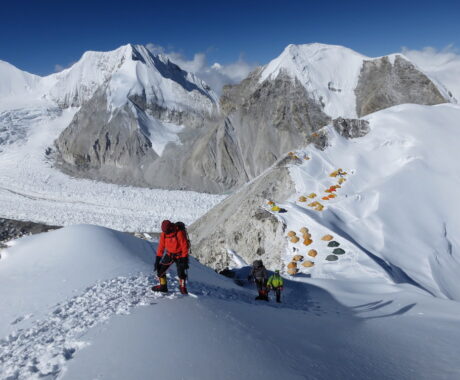
Cho Oyo Expedition
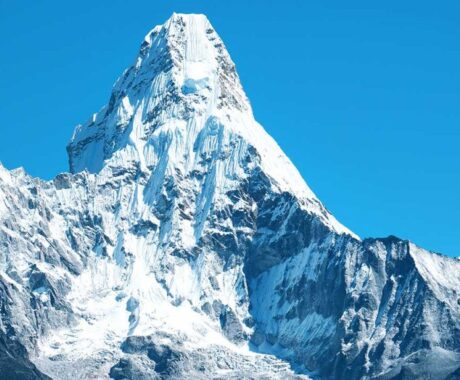
Ama Dablam Expedition
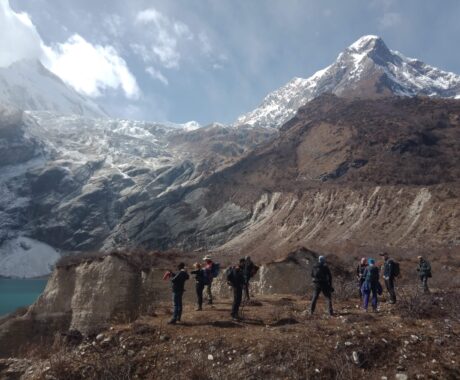
Mt. Manaslu Expedition
